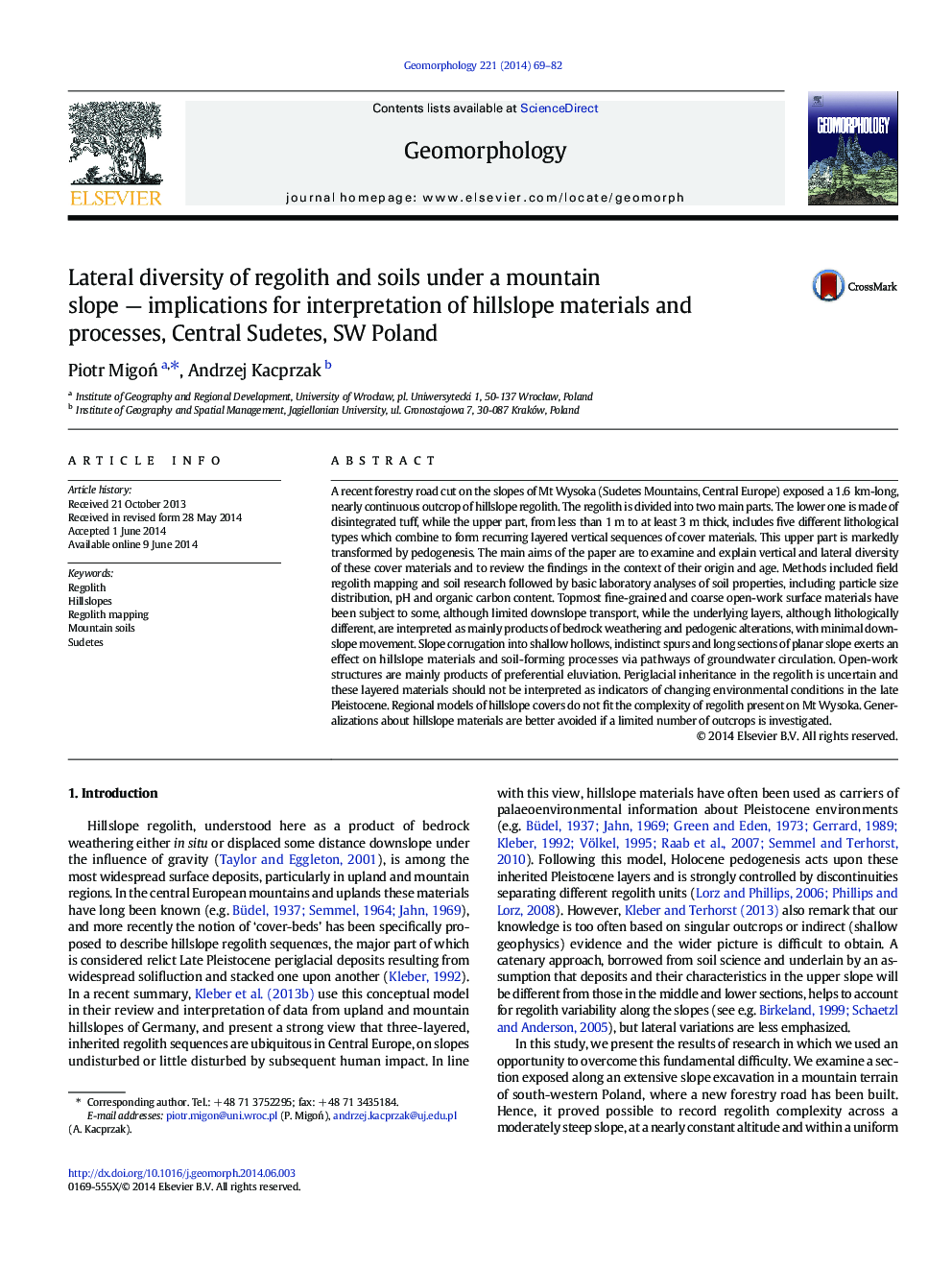| کد مقاله | کد نشریه | سال انتشار | مقاله انگلیسی | نسخه تمام متن |
|---|---|---|---|---|
| 4684378 | 1635428 | 2014 | 14 صفحه PDF | دانلود رایگان |

• A 1.6 km-long continuous outcrop of hillslope regolith is investigated.
• Seven different lithological units of regolith are distinguished.
• Diversity of regolith sequences does not fit the regional models.
• Soil evolution is strongly controlled by regolith properties.
• Regolith and soils are mainly products of Holocene weathering and pedogenesis.
A recent forestry road cut on the slopes of Mt Wysoka (Sudetes Mountains, Central Europe) exposed a 1.6 km-long, nearly continuous outcrop of hillslope regolith. The regolith is divided into two main parts. The lower one is made of disintegrated tuff, while the upper part, from less than 1 m to at least 3 m thick, includes five different lithological types which combine to form recurring layered vertical sequences of cover materials. This upper part is markedly transformed by pedogenesis. The main aims of the paper are to examine and explain vertical and lateral diversity of these cover materials and to review the findings in the context of their origin and age. Methods included field regolith mapping and soil research followed by basic laboratory analyses of soil properties, including particle size distribution, pH and organic carbon content. Topmost fine-grained and coarse open-work surface materials have been subject to some, although limited downslope transport, while the underlying layers, although lithologically different, are interpreted as mainly products of bedrock weathering and pedogenic alterations, with minimal downslope movement. Slope corrugation into shallow hollows, indistinct spurs and long sections of planar slope exerts an effect on hillslope materials and soil-forming processes via pathways of groundwater circulation. Open-work structures are mainly products of preferential eluviation. Periglacial inheritance in the regolith is uncertain and these layered materials should not be interpreted as indicators of changing environmental conditions in the late Pleistocene. Regional models of hillslope covers do not fit the complexity of regolith present on Mt Wysoka. Generalizations about hillslope materials are better avoided if a limited number of outcrops is investigated.
Journal: Geomorphology - Volume 221, 15 September 2014, Pages 69–82